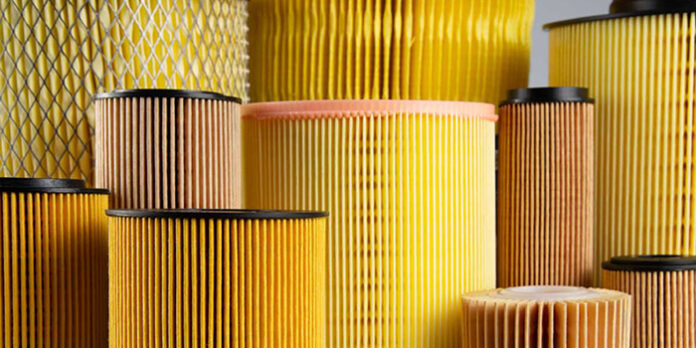The air filter is an essential component of the heating, ventilation, and air conditioning (HVAC) system for removing small particles from internal combustion engines. These systems are found in residential, commercial, and industrial settings. They are an essential component of air-moving devices like fan coils, air handlers, and terminal units. They eliminate dirt that might cause coil blockages and fan wheel instabilities. It is largely necessary for a comfortable and healthy indoor climate, which has a significant impact on the building’s and air handling equipment’s energy performance. The goal is to protect people’s health by maintaining a high level of hygiene in the ventilation system and clean indoor air quality (IAQ).
Green building development and the reuse of these filters are emerging as market trends. It is accompanied by a rise in the need for clean indoor air. Air filtering technology, such as biofiltration, is being aggressively adopted by manufacturers. This gradually leads to a greater awareness of energy savings and the environment, resulting in stringent environmental regulations.
Types of air filters:
- Fine filters
- Coarse filters
- HEPA
- ULPA
- UV-light air filters
- Carbon Air Filters
Factors affecting filtration efficiency:
- Air velocity through the filter medium.
- Particle size.
- Dust loading on the filter.
- Filter packing density.
- Fiber diameter and thickness of the material.
Applications:
- The operating room in a hospital
- Medical industry clean chamber
- Toxic environment
- The use of air conditioning
- Maintain proper IAQ in the living room, office, and so forth.
Regional Analyses:
The North American air filters market is anticipated to be worth $9.64 billion by 2033, growing at a 6.2% CAGR during the forecast period. Concerns about air pollution and the need to improve indoor air quality are driving rising demand for air filters across a wide range of end-use sectors. Healthcare, automotive, and commercial structures are examples. In the North American region, the United States is the most profitable market for air filters, followed by Canada and Mexico.
The European air filter market is predicted to grow at a 6.5% CAGR over the next five years. Local governments face issues as urban air pollution levels rise. With over 70% of the millennial population working indoors in enterprises, it is vital to safeguard individuals from fine dust and infectious disease. The principal causes of fine dust in the air are exhaust fumes and smoke. As a result, governments across Europe are preparing to implement new air purification systems. Particulate matter in the air is enhanced by factors such as urbanization, increased building activity in cities, the spread of airborne diseases, and automobile carbon emissions, further worsening air quality.
Recent Development:
LG will launch a new line of battery-powered goods for the Indian market in April 2022. LG has developed PuriCare wearable air purifiers, which include HEPA filters, dual fans, voice on, IPX4 technology, and other features to provide users with a comfortable yet hygienic experience.
Researchers at the University of Birmingham developed new antimicrobial technology for air filters in March 2022 that can eradicate bacteria, fungi, and viruses, including SARS-CoV-2, in seconds. This technique could be used to prevent the spread of airborne infections.
According to the SNS view, health and well-being As people become more aware of the health dangers connected with air pollution, there is a greater demand for effective air filtration technologies. Air filters contribute to improved indoor and outdoor air quality by lowering exposure to allergens, particulate matter, volatile organic compounds (VOCs), and other dangerous pollutants. Compliance with Regulations Stringent air quality rules established by governments and international organizations necessitate the use of effective air filtration systems in a variety of industries. Industries are under pressure to ensure compliance, which is driving up demand for improved filtering technologies. The air filter industry is expected to expand more as the importance of clean air is recognized. The market is well-positioned to create solutions that benefit the public, with a focus on innovation, regulatory compliance, and sustainable practices.
